
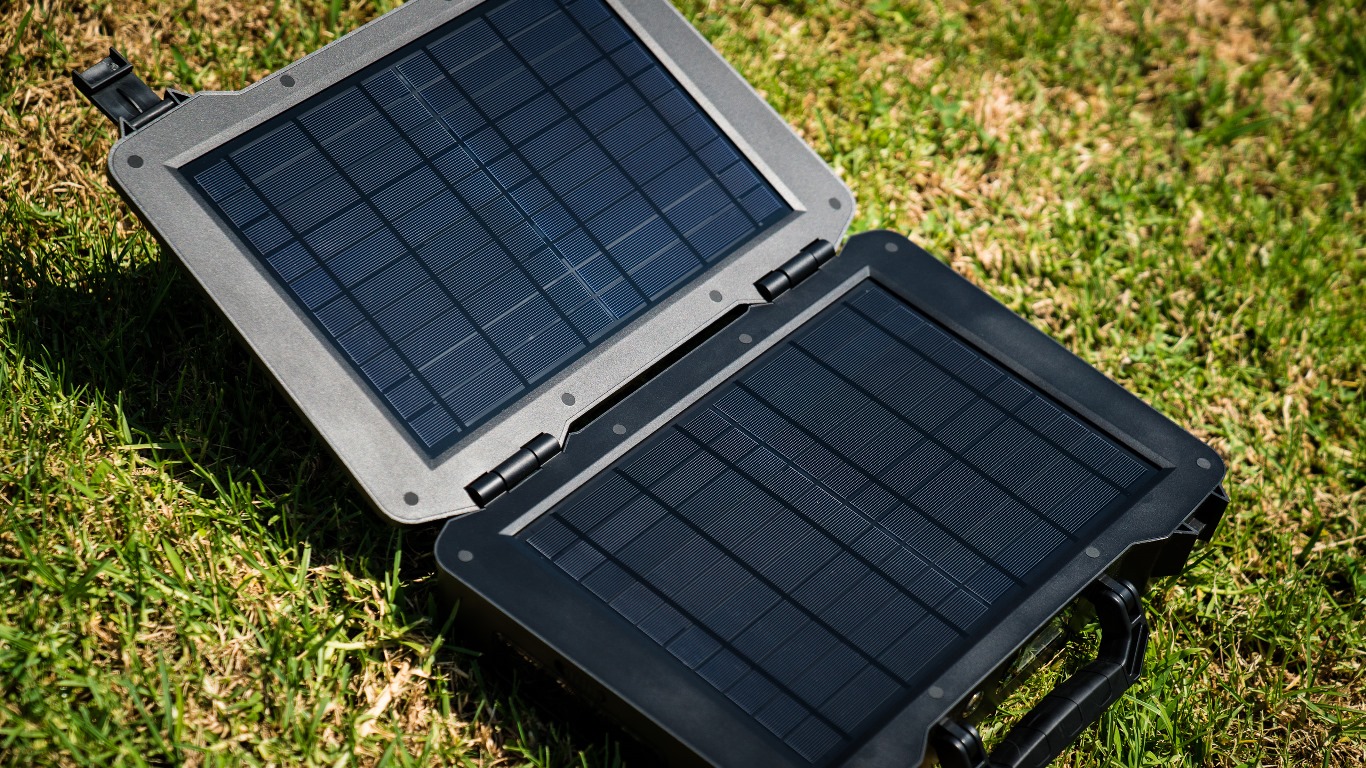
I love getting off the grid and hitting the woods to camp, if only for a brief reprieve from the chaos of daily life. Even a brief stint away from the city provides enough time to recharge and get back in the trenches for the daily grind, but I don’t like to be completely without my electronics. The folks at Renogy Solar have crafted what they think is the best solar generator for reliable standby power, the Phoenix 20W kit. The kit packs a built-in battery and 20W mono-crystalline solar panels for power on the go, that has more juice than a power bank in a small form.
The big question is, can you have a quality solar generator that is still portable, without sacrificing power?
Uses for a portable solar generator
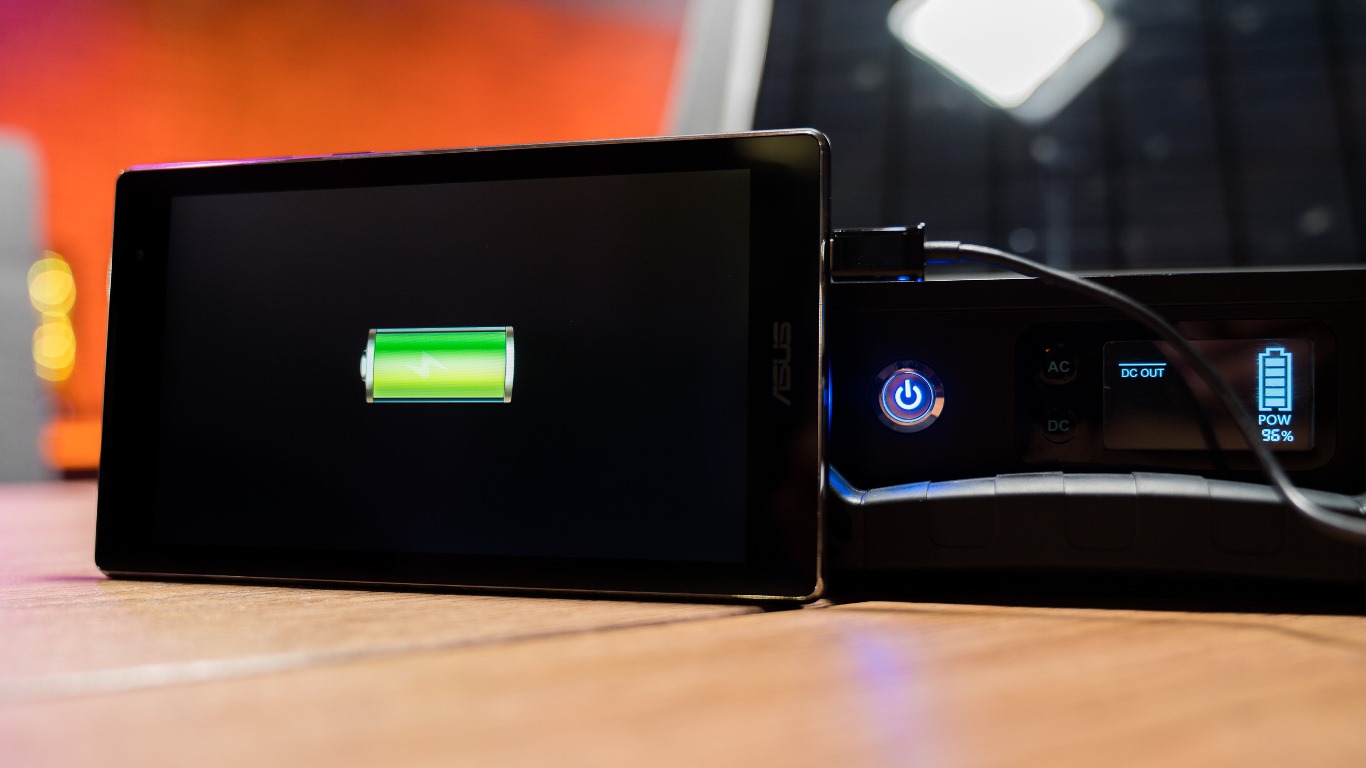
While there are tons of micro portable solar chargers on the market for small power banks, there are fewer solutions available for medium power needs. Beyond having a solar generator for camping, the ability to have remote power on demand is super useful (if you live in an area that gets regular sunshine). Blasting tunes from a stereo on a beach day, charging up cell phones at a BBQ, quickly inflating rafts by the river, charging drone batteries in the field—the list goes on and on for practical regular uses.
For road trips or emergency go-bag situations, keeping a gas generator standing by for travel is not a feasible option, but having power could be a big deal. Most devices you would need power for in these situations are relatively low on the power consumption scale, but a little power bank might not cut it. Unlike other inverter solutions for AC/DC conversion and charging, the Phoenix doesn’t require the vehicle to be running to power it.
Power of the Phoenix
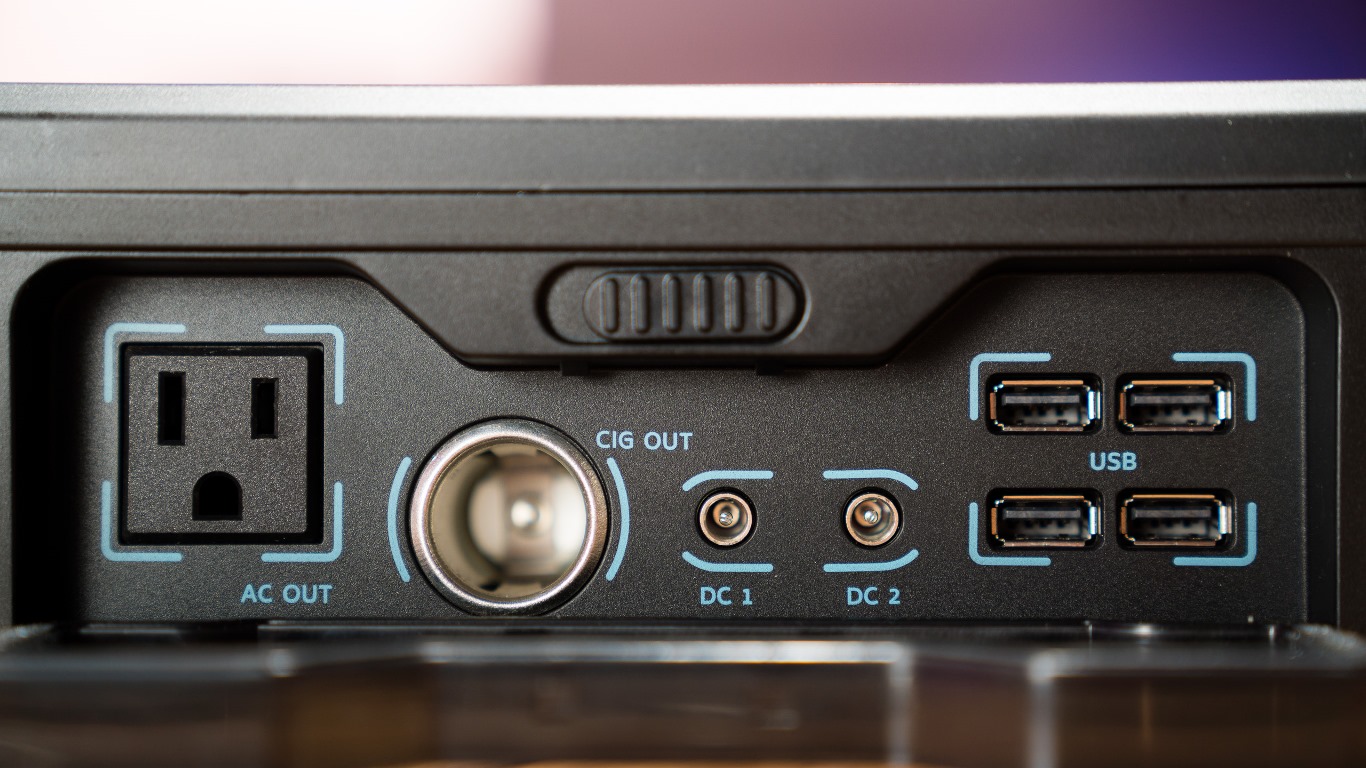
The kit itself consists of a replaceable 16Ah lithium-ion battery, and two 10W mono-crystalline solar panels that fold out from the briefcase-sized unit. The input/output ports are nestled on the sides of the unit behind plastic doors, and the lid clips into place when closed. The available ports for charging are as follows:
- 1 AC input
- 1 AC output
- 1 12V cigarette input
- 1 12V cigarette output
- 2 solar inputs
- 2 DC outputs 12V @3A max
- 4 USB outputs 5V @2.4A max
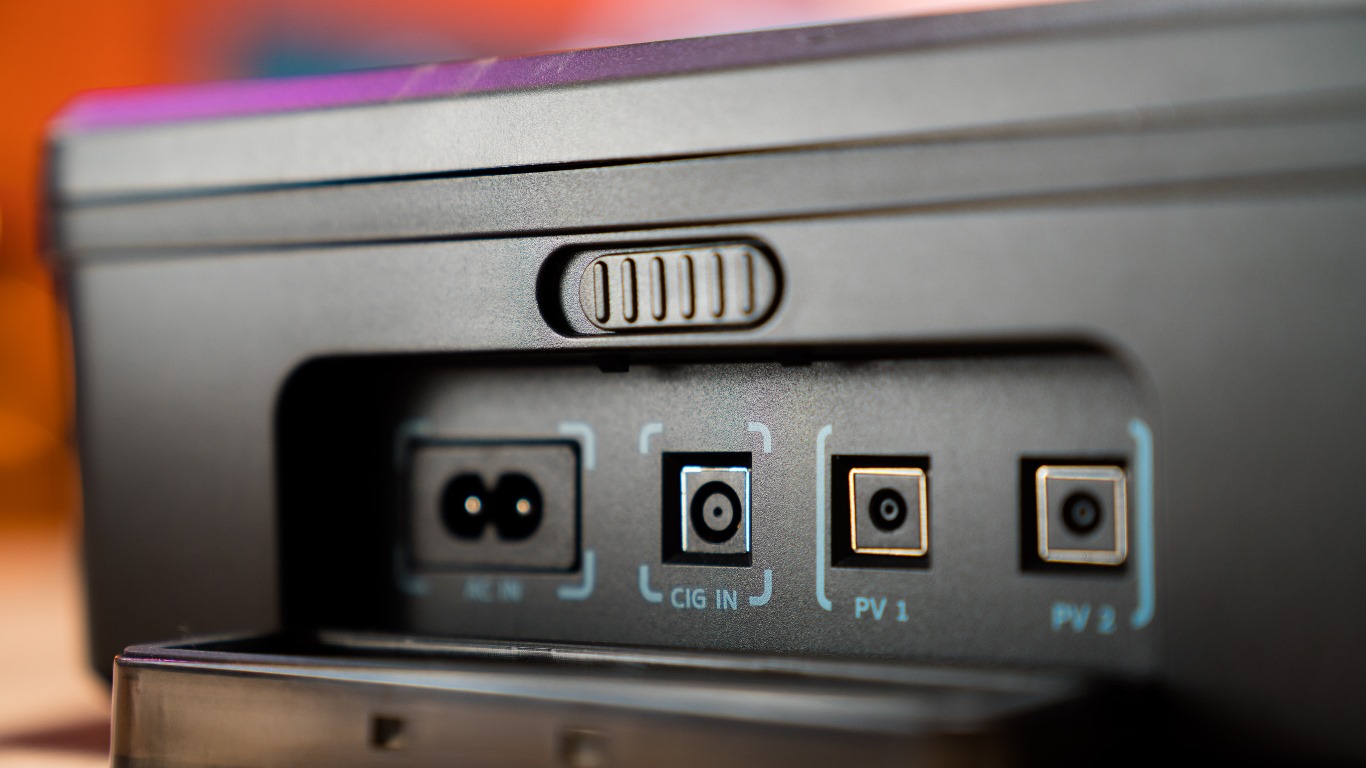
The Phoenix has a max continuous output of 150 watts, which is enough to power most small to medium electronics. AC (alternating current) devices like lamps, small coffee pots, heaters, fans, and the like can be charged via the pronged-plugs. DC (direct current) devices with batteries like flashlights, pocket power banks, and other electronics can be powered directly off the USB ports.
While the unit comes with only two panels, the generator is expandable with up to 100W of additional solar panels, maxing out at 120W. The more panels that are added, the quicker it is to charge the battery. At the full potential it would take less than 2.5hrs to charge the 16Ah Li-ion battery; however it can also be charged directly via the 12V charging socket or AC power so it is ready to go whenever. Of course adding additional panels would contribute to the weight factor, although at just under 13 pounds this wouldn’t be a backpacking-appropriate as it is.

The generator has a total harmonic distortion (THD) of 10%, and a pure Sine wave AC out inverter which makes it suitable for sensitive electronics. On the note of safety, the overload protection is set at 170W, with additional protection for shorting, low voltage, and temperature fluctuation. One of the technologies that Renogy included on the Phoenix is Maximum Power Point Tracking (MPPT) charging tech, which according to them finds the maximum operating point for the panels, and is up to 99% efficient.
How does portable solar charging work?
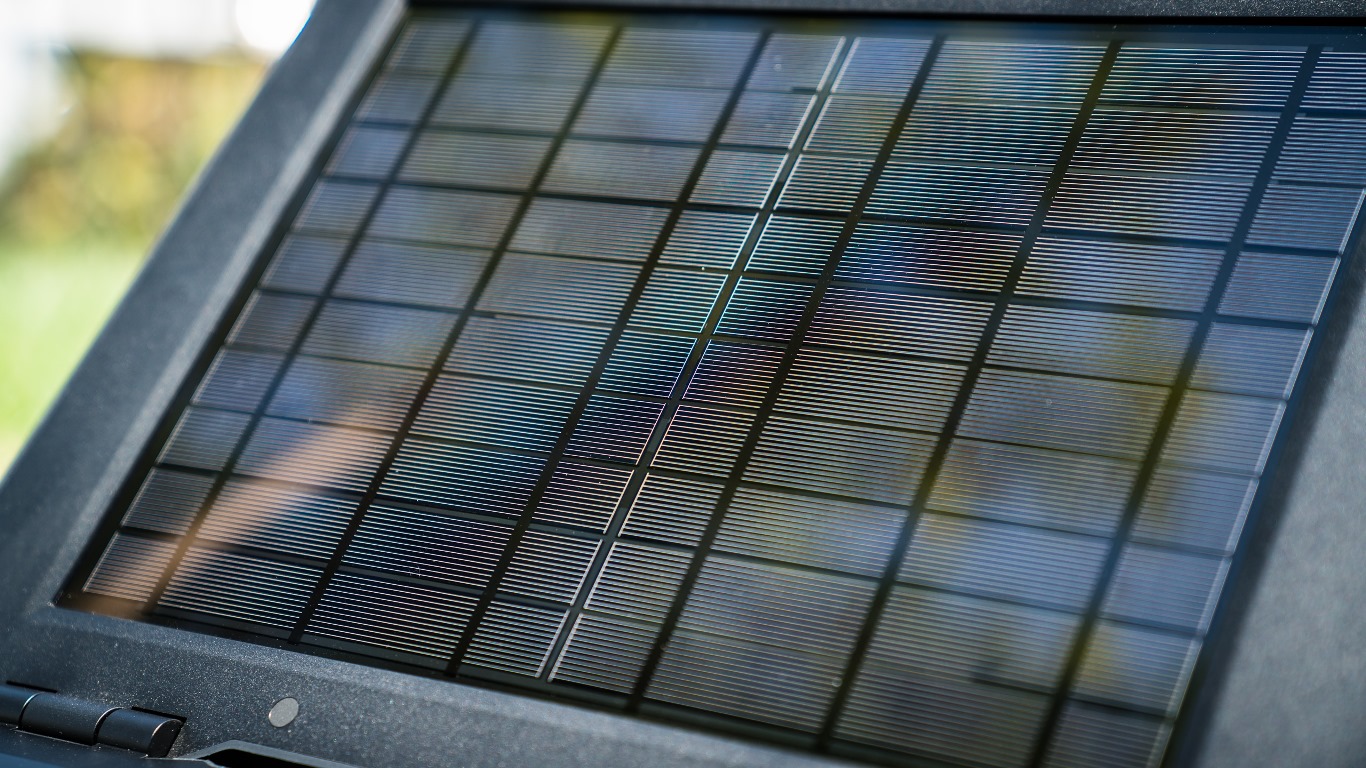
Solar batteries are becoming more efficient at storing power, the technology to create solar equipment is driving down the costs, and the size is becoming more compact.
There are a few kinds of portable solar panel forms, which are mono-crystalline (like the Phoenix), poly-crystalline, and thin film amorphous. Panels that are mono-crystalline are more efficient than those that use the other two methods, however they will be the most expensive. Poly-crystalline panels are less efficient and therefore less expensive, but have a similar physical structure to mono-crystalline panels. Thin film amorphous panels also sacrifice efficiency but are easy to transport and roll up, folded, or bent, due to their thin nature and compound. The weight is also greatly reduced with the thin form panels (you can read more about different portable solar nuances).
The panels generate electricity through the photovoltaic cells, which is then stored in a battery for DC (direct current) use, and passed through an inverter for AC (alternating current) use for electronics with prong plugs.
Buy Renogy Phoenix Solar Generator- $699
Take charge

The Phoenix feels like it was made to last, with the design of the case allowing for the outdoor utility you would want in something like this. The case has covers over the connectors which is nice to keep out dirt, although it isn’t by any means sealed against the elements. The outer ABS construction and clips feel sturdy, but if you were to drop the unit on an edge onto cement, it would probably crack—so this isn’t meant to be thrown around.
Phoenix did a good job of thinking about the structural support within the design, as they knocked off the corners of the rectangular shape to eliminate some weak points. Even still, the most delicate part of the unit is of course the set of panels protected in the clamshell generator. Renology seems to have an answer to that as well—they are standing behind their product.
The Renogy Phoenix isn’t cheap at $699, so you would hope that it last for a considerable amount of time. The standard warranty for the panels is 25 years on the output, with a guaranteed 5 year/95% efficiency rate, 10 year/90% efficiency rate, and a whopping 25 year/80% efficiency rate.
Side note—If you have this thing for 25 years and you are still getting 80% efficiency through regular use, by then you would have gotten every bit of your money’s worth. Not to leave out the more common issue with product failure, they tacked on a 5 year material and workmanship warranty to boot.
Final thoughts
The Phoenix solar generator isn’t the cheapest option for backup power on the market, nor is it the most powerful. As of now gas generators still take the cake in both of those categories. If you plan on using something for power tools, medium to large appliances, or home emergency backup you would be better suited to get a gas generator, like the Pulsar dual fuel 10,000W generator we took a look at earlier this year.
These heavy duty generators would not be nearly as portable as the Phoenix and have other considerations (noise and exhaust among them), but deliver a wide range of outputs. But when looking for something that is the size of a briefcase, there isn’t much competition that can offer similar functionality and ease of use.
This solar generator is clean energy, compact and relatively lightweight, and has options to expedite the power generation as you see fit. While the power won’t be massive by any means, you do get enough to keep your essentials charged up when you need them, and can do it on the go without gasoline.
Note, all prices and products are accurate at the time of article publication, although some may have changed or are no longer available.

